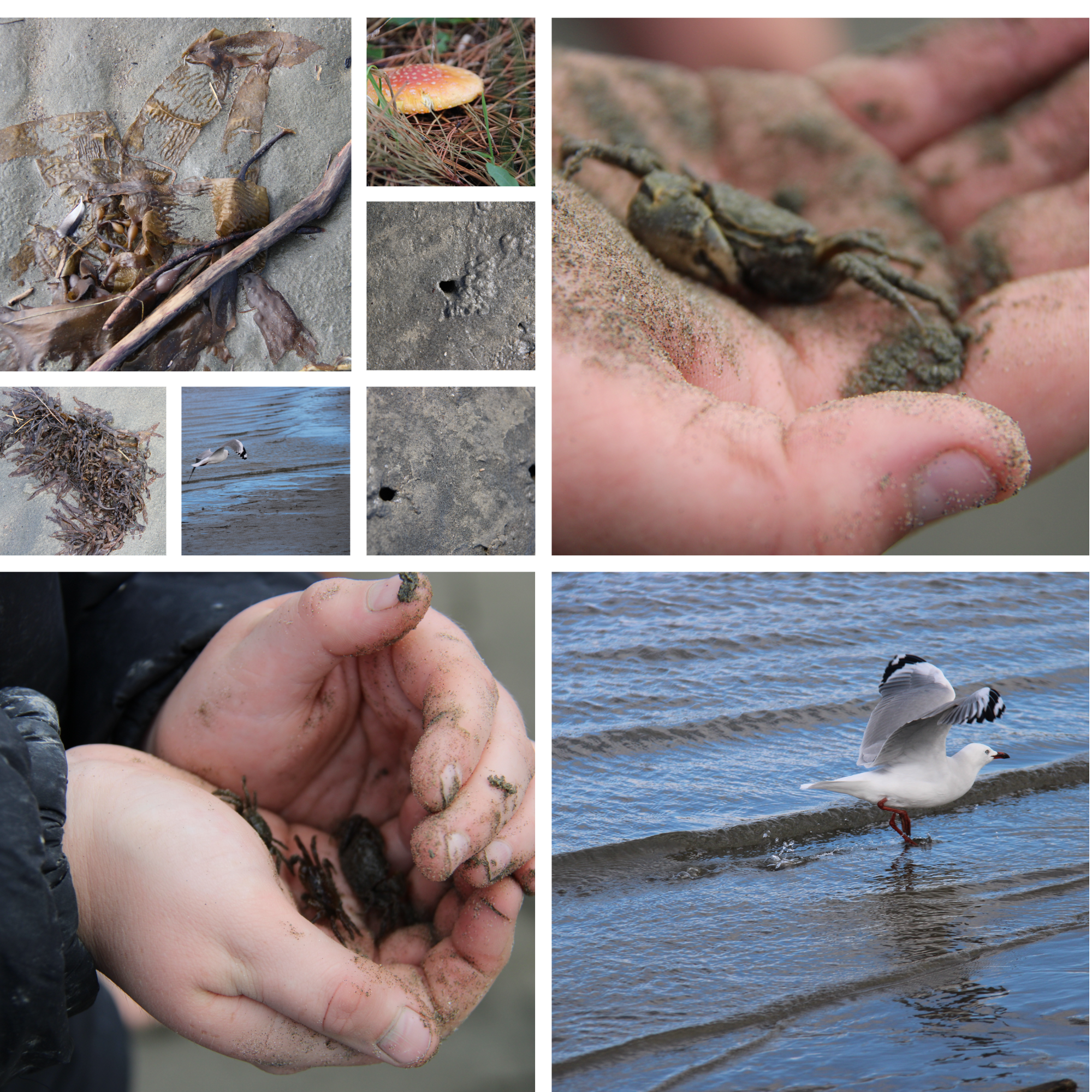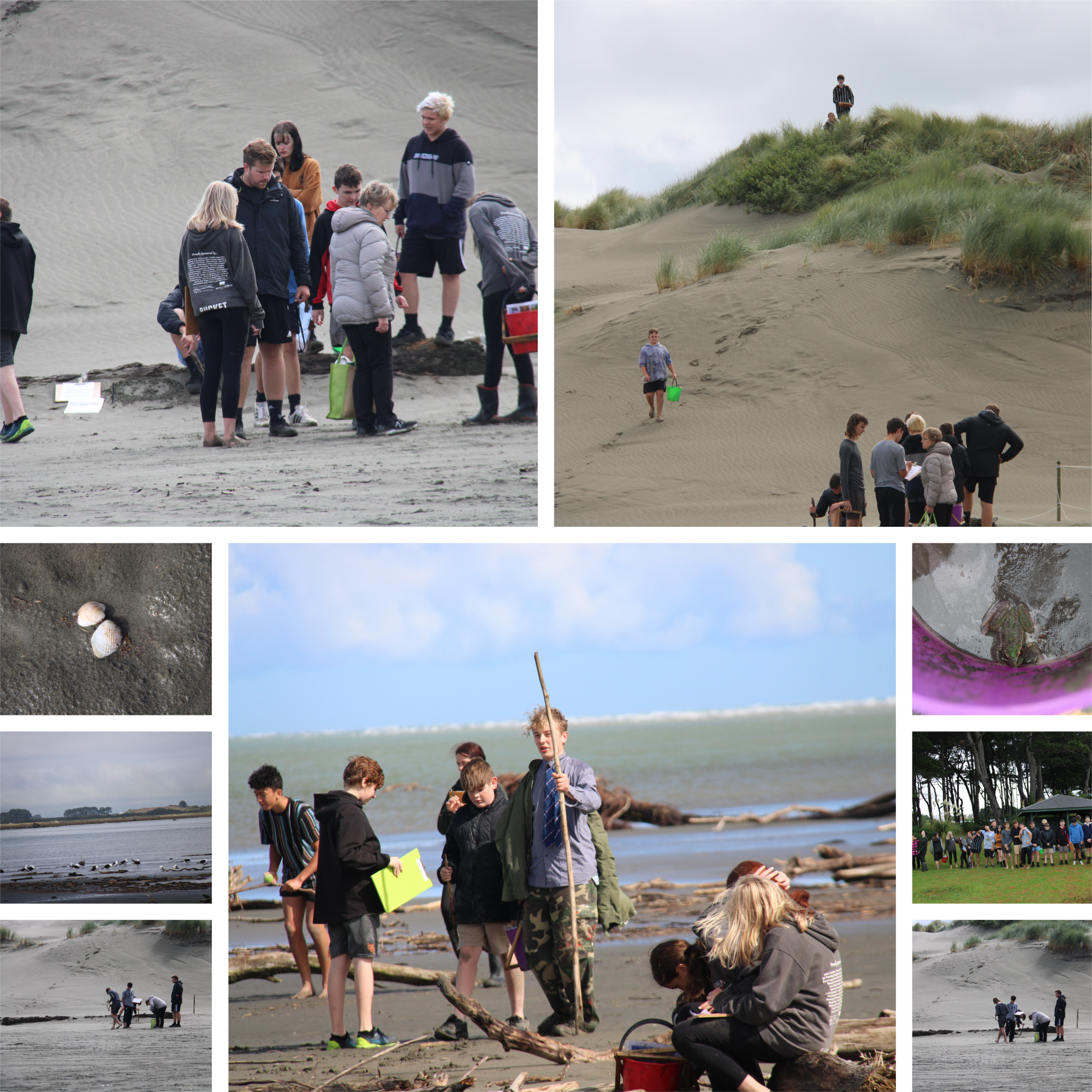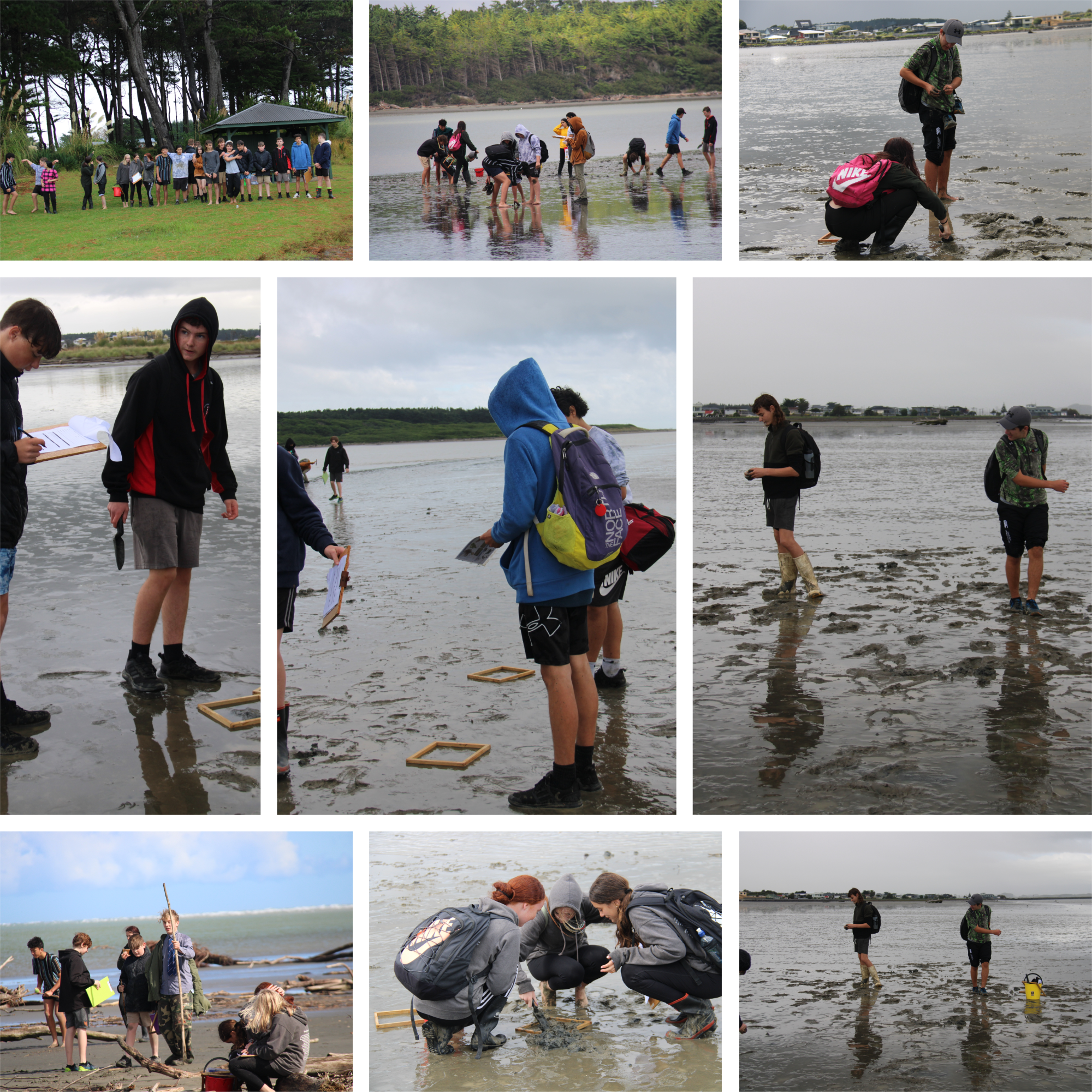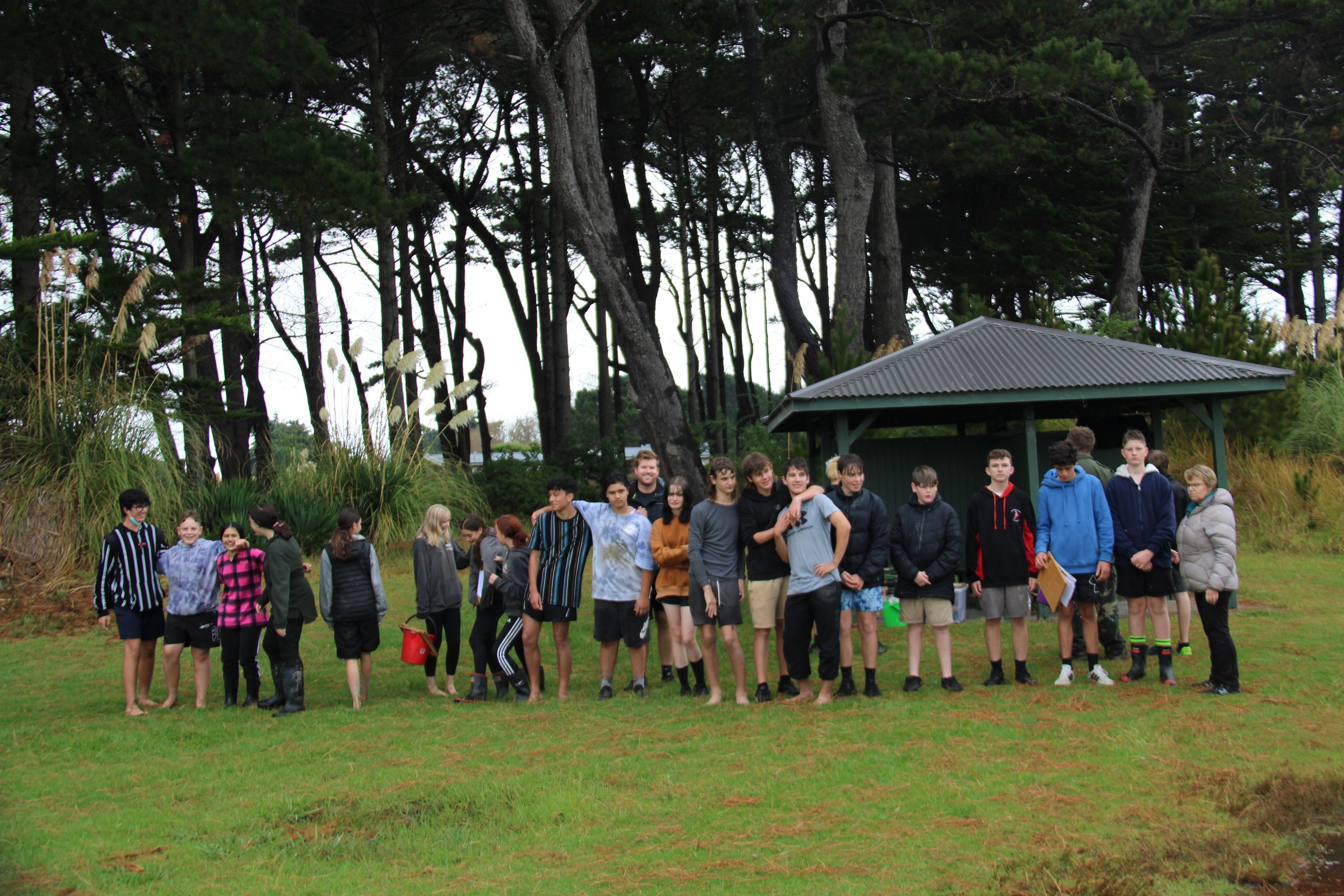Estuary study -Foxton beach
Horowhenua students were very excited to be the first students to engage in an infaunal study of animals at Foxton Estuary. Led by Professor C Pilditch, Te Aka Mātuatua - School of Science, Waikato University and author of Ecology of Coastal Marine Sediments along with PhD. student, Lolita of the Coastal Marine Group, rangatahi learnt about the value of estuaries and their ecosystems.
There are 300+ estuarine systems
Professor Pilditch outlined the challenges being faced by all of the 300+estaurine systems in NZ.
The challenges facing our estuaries include, sediment dumping from storms and erosion that serve to smother plants and animals resulting in changes to habitats, and reduction of ecosystem functionality. There are also chronic effects that produce elevated turbidity. The latter producing loss of primary production , altered nutrient cycles and loss of shellfish.
■Rangatahi learnt that Manawatū Estuary is listed under the Ramsar Convention on Wetlands as a Wetland of International Importance.
■Significant area of saltmarsh, sand dunes and mudflat and located at the intersection between freshwater and marine environments.
■The estuary provides habitat and migration routes for native fish and feeding grounds for shorebirds that forage on invertebrates such as shellfish and worms.
■The team described that there has been little research conducted on the animals living within the intertidal zone.
One of the key outcomes was to determine if there were any differences in abundance or biodiversity of the animals living within various habitats at Manawatū Estuary.
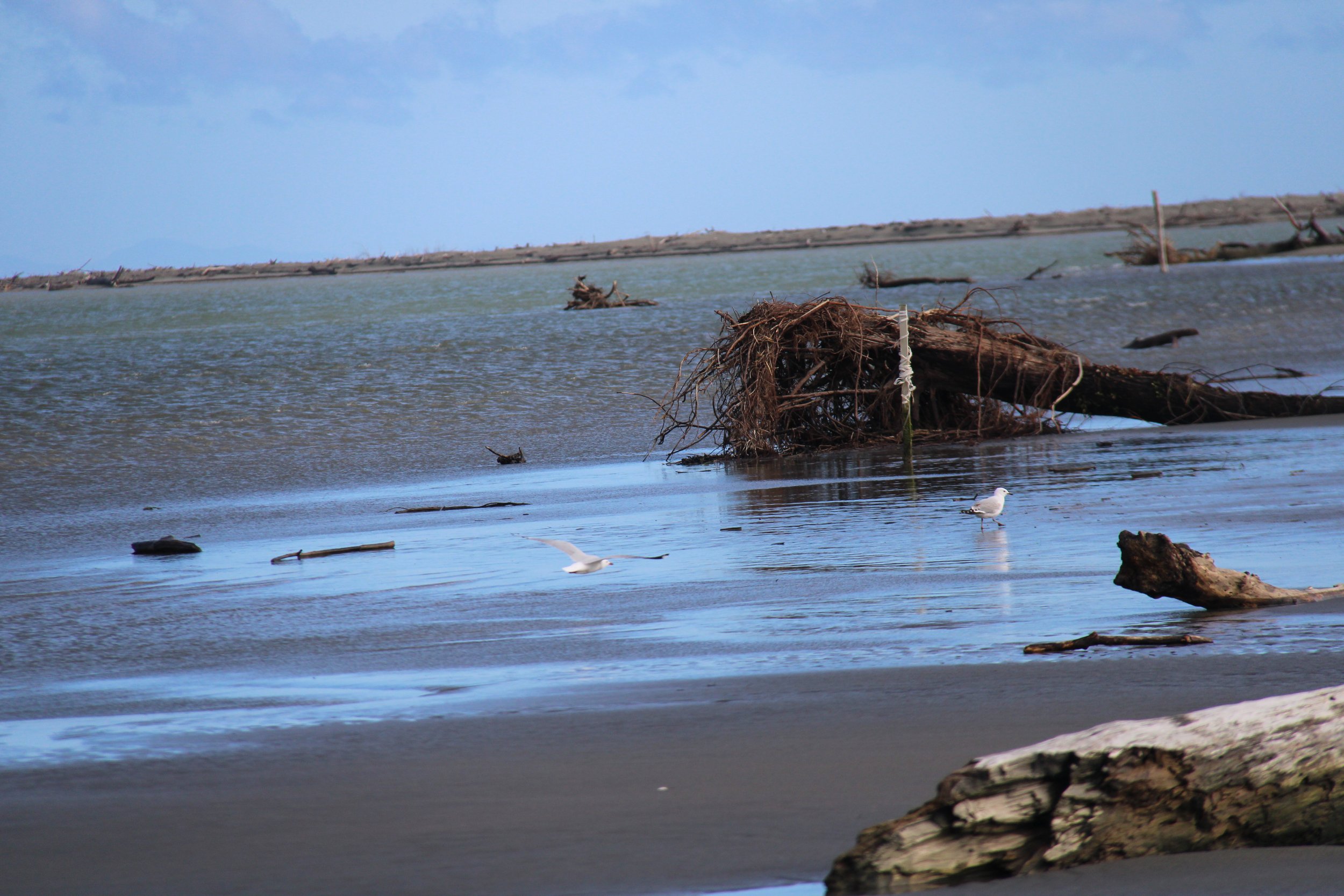
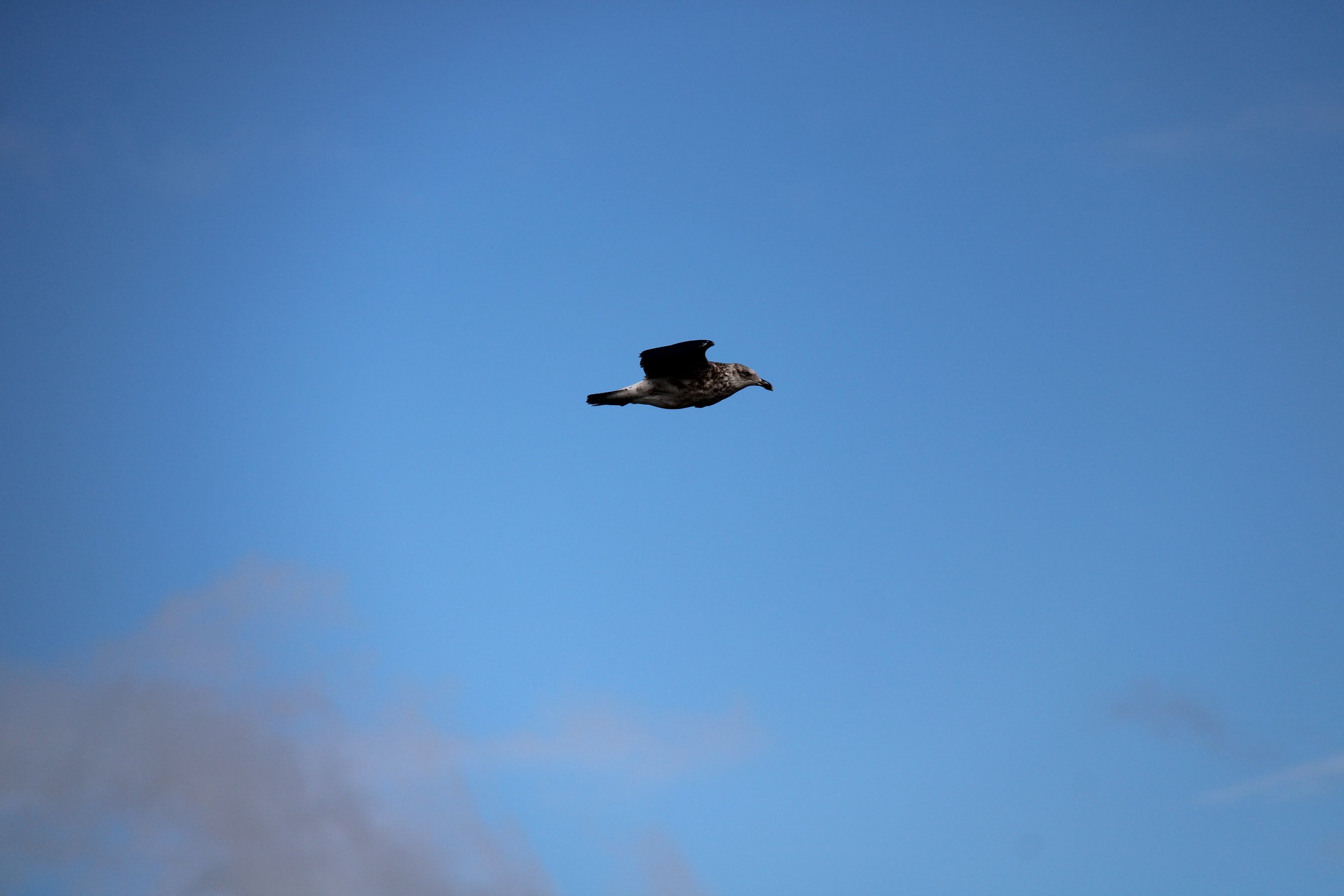
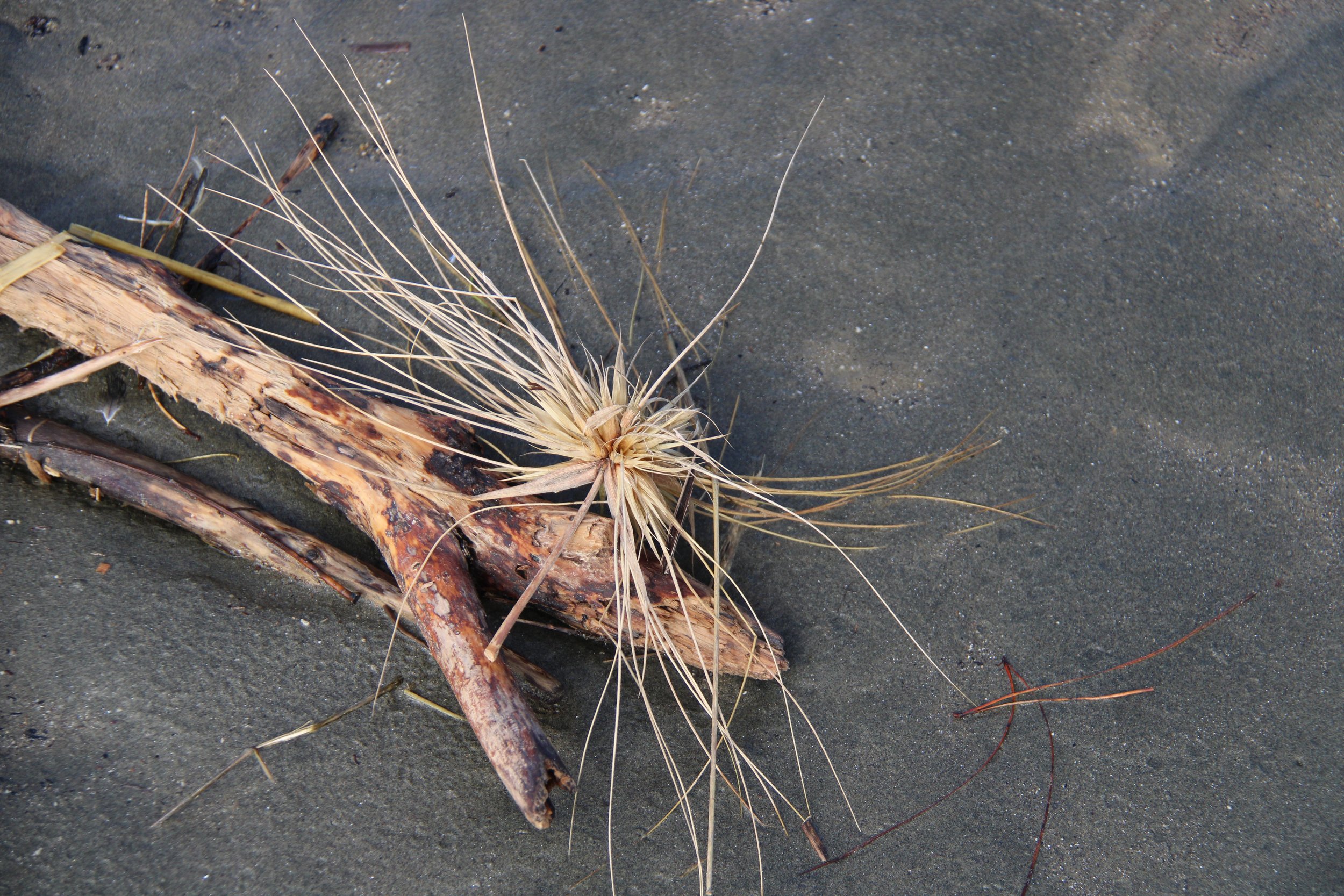

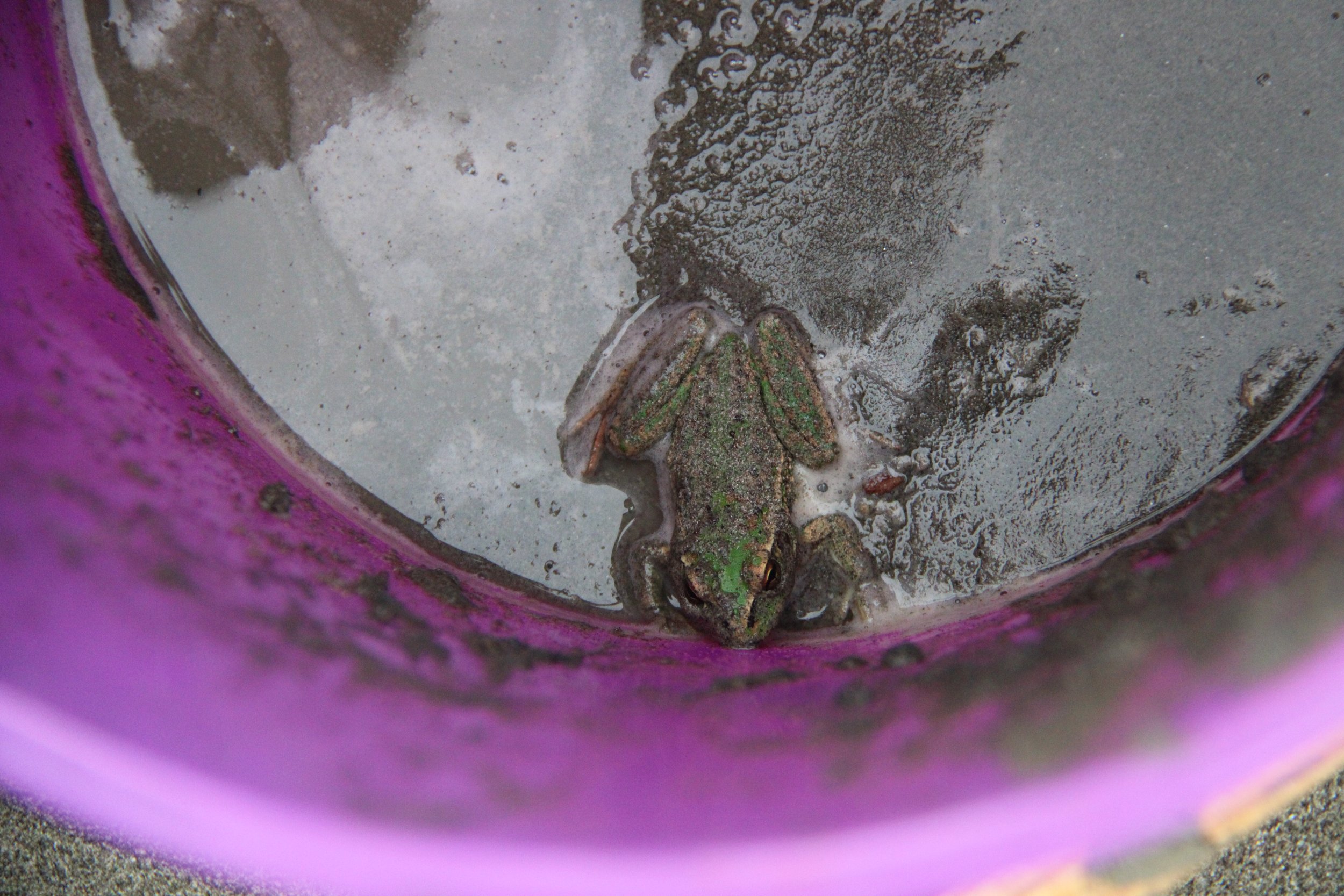
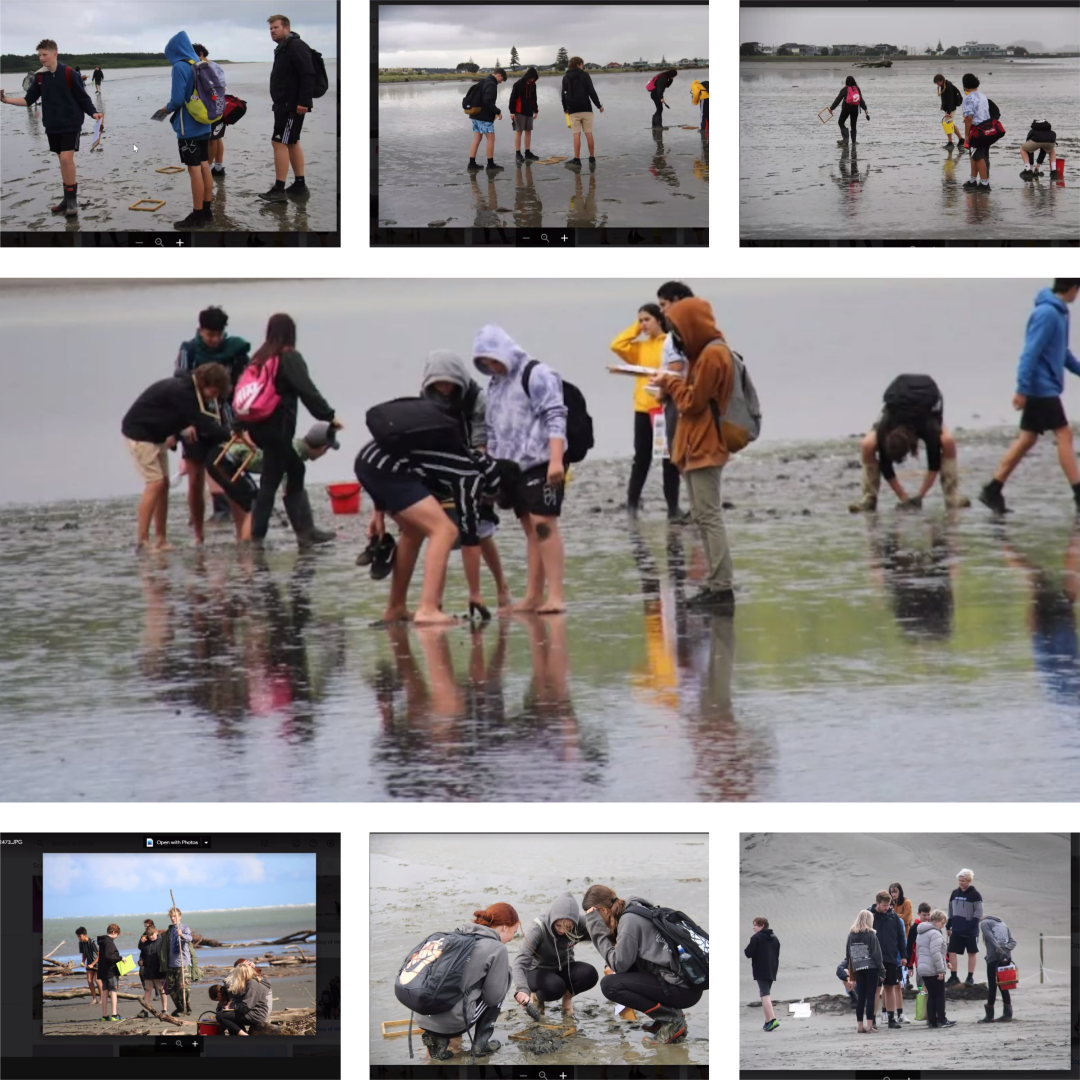
All in all a great day in the field.
Abundance and diversity
Students found more creatures in the muddy habitat than in the sandy area.
Students also learnt that the muddy site is a great area for birds as there are more mussels, snails and mud crabs in that area.
A great day of STEM engagement together.



